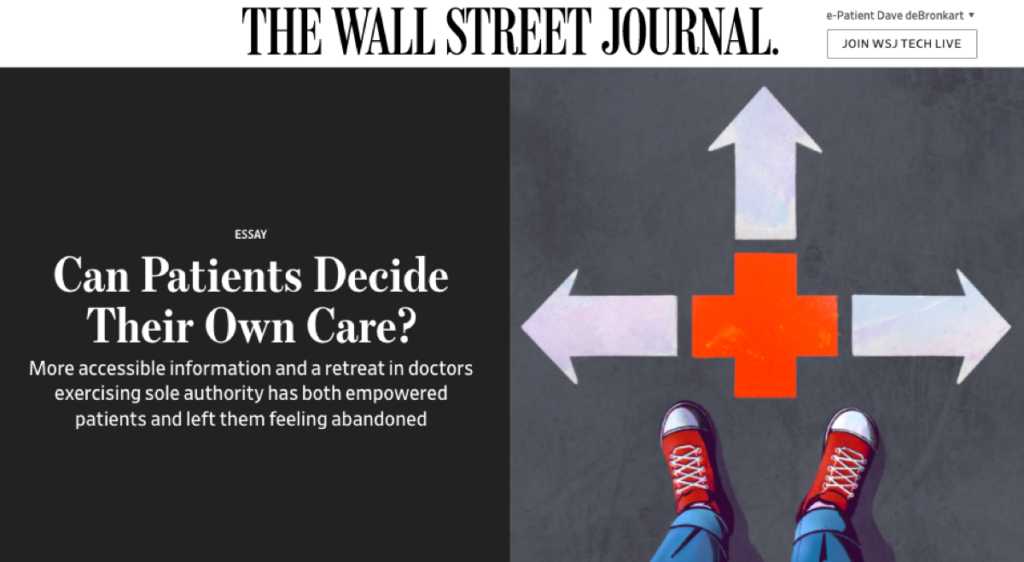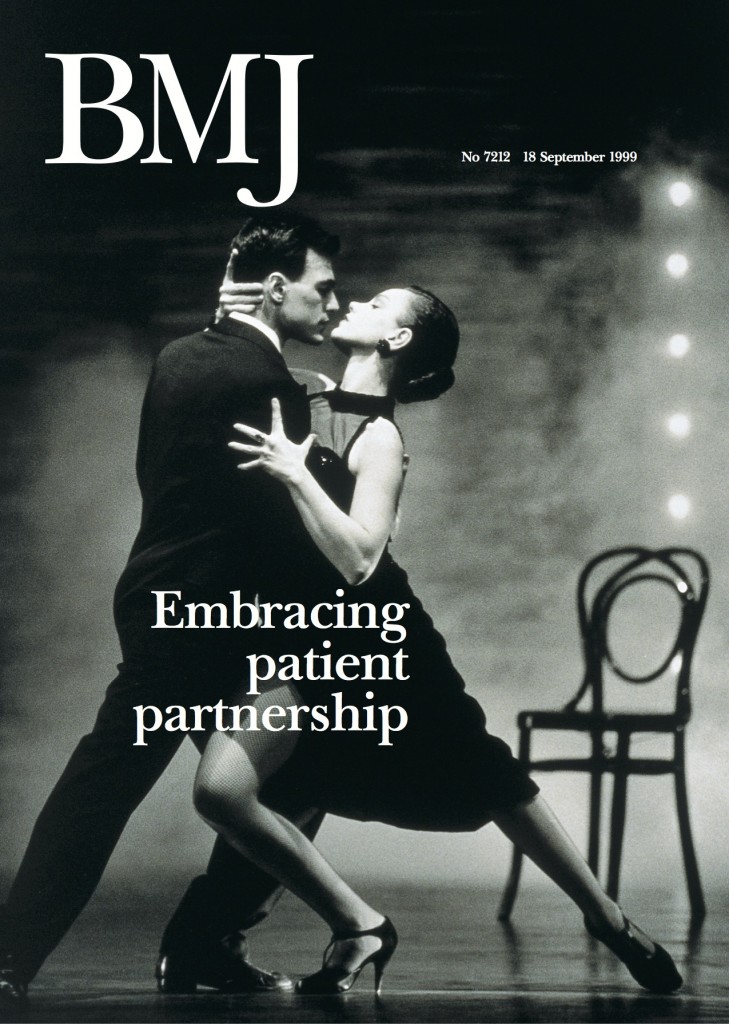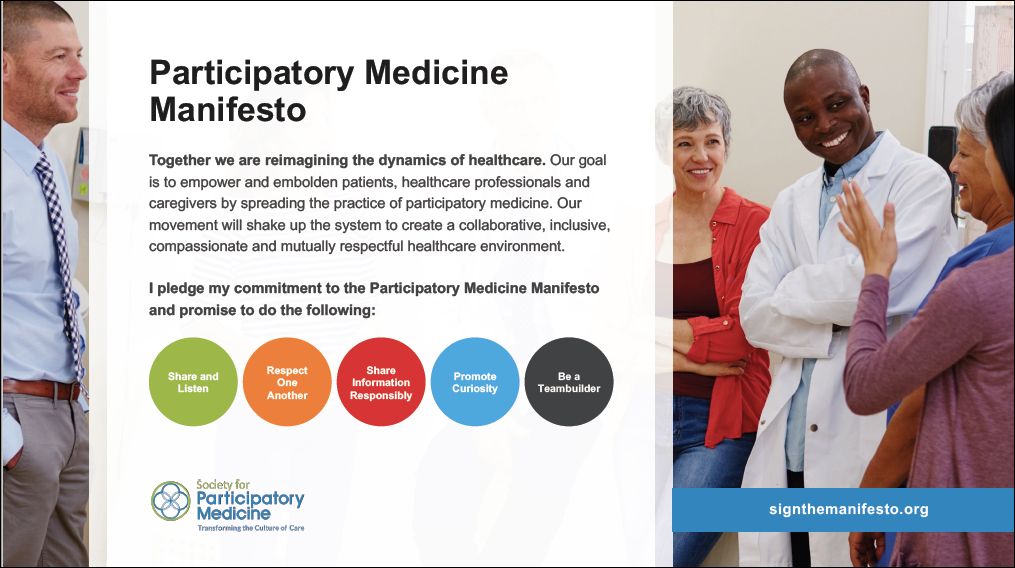In the twelve years I’ve been studying the evolution of medical science and the sociology of healthcare – the relationships – I’ve never read anything that stopped me in my tracks with how it summed it all up so quickly. This one, by Talya Miron-Shatz, did. Click through and give it a read – it’s not long.

It’s about cultural evolution.
I’ve often said in speeches and blogs that patient empowerment has strong parallels with the women’s movement, in which roles evolved as the previously powerless party (women, patients) started to step into their power. Not everyone changes at the same rate, and if we really care about patient-centered anything (or true power for each woman), we need to listen to what matters to the individual. It really is like the evolution of dancing back in the sixties, from “boy leads, girl follows” to “Hey you – I have some thoughts of my own!”

This was all brilliantly summarized in 1999 by this BMJ cover image – 22 years ago last month.
I have one gripe with the essay’s subtitle, which says the changes have “both empowered patients and left them feeling abandoned.” That wording lumps everyone into one “patients” bucket, which is as erroneous as thinking all women want the same things.
Spoiler alert: in case you haven’t noticed, women are different. Same for patients. It should say “has empowered some patients and left others feeling abandoned.” In my experience that’s exactly how it was with evolving roles between genders back then.
Culture is shared expectations.
Already today on Twitter and in messaging with colleagues on Talya’s essay I’ve seen dissent about both the essay and the broader subject (empowerment through information). This always happens when cultural rules change. Heaven knows there’s no one view shared by all feminists!
On a strongly related note, that’s why I think one of the most important milestones in the history of our movement is the publication last year of the Participatory Medicine Manifesto, which defines it as an exchange of promises in five areas:

In my view, it’s possible for people at all stages of the change to buy in to those agreements – that’s one of its beauties. (Not surprisingly, Talya endorsed it last year.)
Here’s a suggestion: reflect on those ideas for a moment then go back and review the essay.


I couldn’t agree more. How can individuals learn about their options when everything is so complex? No one is reimbursed to research, discuss, and educate. For example, consistent family meetings with healthcare teams are necessary, but rarely happen.
I would read it, but it is behind a paywall. Thanks, but no thanks.
I just love it when people complain at me for touting something I saw that was great, if I fail to notice it’s something I subscribe to and not everyone does. It really justifies the effort of blogging about it in the first place. Not; to the contrary, complaints about my “service” were a factor in why I blog much less than I used to.
Anyway I’m sure you’ll be happy to know that the WSJ, NYTimes, and more have started offering subscribers a limited number of “free share” articles per month, so here. I didn’t realize that when I blogged this, so I’ll go back and edit the post.
https://www.wsj.com/articles/can-patients-decide-their-own-care-11633618876?st=mpt9freedzqsv2p&reflink=desktopwebshare_permalink